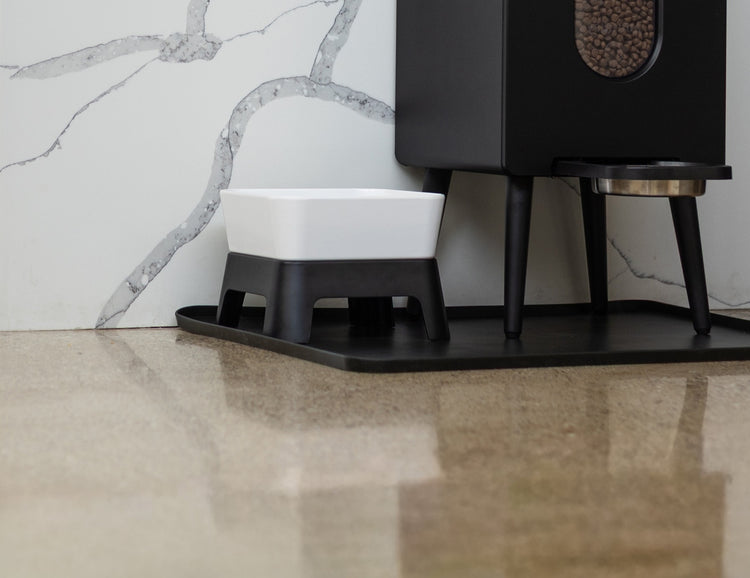What to Feed a Diabetic Dog to Gain Weight: A Comprehensive Guide
- Houndsy
Table of Contents
- Introduction
- Understanding Canine Diabetes
- What to Feed a Diabetic Dog to Gain Weight
- Feeding Schedule and Routine
- The Role of Exercise
- Conclusion
- FAQ
Introduction
Imagine this: your furry friend, once playful and energetic, is now struggling with their weight and managing diabetes. For many dog owners, the discovery that their beloved pet is diabetic can be overwhelming. Interestingly, diabetes in dogs often leads to weight loss, despite increased appetite, making it crucial to understand how to help them gain weight healthily. Did you know that nearly 1 in 200 dogs are diagnosed with diabetes? This statistic highlights the importance of understanding the dietary needs of diabetic dogs, especially when it comes to weight management.
In this blog post, we will explore what to feed a diabetic dog to help them gain weight effectively while managing their condition. We will cover essential dietary components, the importance of regular feeding schedules, and tips for maintaining an ideal weight. By the end, you’ll have a clearer understanding of how to nourish your dog in a way that supports their health and happiness.
So, if you’re a pet parent concerned about your dog’s weight and well-being, grab a comfy seat and let’s dive into the world of canine nutrition for diabetic dogs.
Understanding Canine Diabetes
Before we delve into the specifics of what to feed a diabetic dog to gain weight, it’s essential to understand what diabetes is and how it affects our canine companions. Canine diabetes mellitus is similar to type 1 diabetes in humans, where the body either doesn’t produce enough insulin or the cells become resistant to its effects. Insulin is a hormone that helps regulate blood sugar levels by allowing glucose to enter cells for energy.
When a dog has diabetes, their body struggles to manage blood sugar effectively, leading to elevated glucose levels. Common symptoms include increased thirst, frequent urination, and, notably, weight loss despite a good appetite. This can create a vicious cycle where dogs become underweight, further complicating their diabetes management.
Key Nutritional Needs for Diabetic Dogs
To effectively manage diabetes and support weight gain, it’s crucial to focus on specific nutrients:
- Low Carbohydrates: Carbohydrates convert quickly into glucose, which can cause spikes in blood sugar. Low-carb diets help manage blood sugar levels and reduce the risk of complications.
- High Fiber: Fiber slows down the digestion process, allowing for a gradual release of glucose into the bloodstream. This helps maintain stable blood sugar levels and can also contribute to a feeling of fullness, which is important for weight gain.
- Quality Protein: Proteins support muscle maintenance and overall health, which is vital for underweight diabetic dogs. Lean sources of protein such as chicken, turkey, and fish are ideal.
- Healthy Fats: While fat should be consumed in moderation, healthy fats provide essential fatty acids that benefit the skin, coat, and overall health. They also help your dog feel full and satisfied.
What to Feed a Diabetic Dog to Gain Weight
1. High-Quality Commercial Dog Foods
Choosing the right commercial dog food is critical for diabetic dogs needing to gain weight. Look for options that are specifically formulated for diabetic pets. These foods typically contain low carbohydrates, high fiber, and quality protein. Some recommended brands include:
- Hill’s Prescription Diet: Formulated to help manage diabetes while providing balanced nutrition.
- Royal Canin Glycobalance: Designed to support weight management and blood sugar control.
- Orijen Dry Dog Food: High in protein and made from fresh, natural ingredients, beneficial for dogs needing to gain weight.
2. Homemade Diets
If you prefer to prepare your dog’s meals at home, it’s essential to formulate a balanced diet that meets their nutritional needs. Here are some components to consider:
Lean Proteins
Incorporate lean meats such as chicken breast, turkey, and fish. These proteins should make up a significant portion of your dog’s diet to help support muscle mass.
Healthy Vegetables
Include fiber-rich vegetables like green beans, carrots, and broccoli. These not only provide essential nutrients but also help slow the absorption of glucose.
Healthy Fats
Add sources of healthy fats, such as fish oil or coconut oil, in moderation. These can help increase calorie intake while providing essential fatty acids.
Sample Homemade Recipe
Here’s a simple recipe to try:
- 1 cup of cooked chicken breast (shredded)
- ½ cup of steamed green beans
- ¼ cup of cooked quinoa
- 1 tablespoon of fish oil
Mix these ingredients together and serve based on your dog’s caloric needs. Always consult with your veterinarian before making significant changes to your dog’s diet.
3. Incorporating Supplements
Sometimes, adding supplements can aid in weight gain. Here are some options to consider:
- Digestive Enzymes: These can help your dog absorb nutrients more effectively from their food.
- Probiotics: Good for digestive health and can improve nutrient absorption.
- Caloric Supplements: Products like high-calorie gels or pastes can provide extra calories without requiring a large volume of food.
Feeding Schedule and Routine
Consistency is critical in managing diabetes and supporting weight gain. Here are some tips to establish a proper feeding schedule:
Regular Meal Times
Feed your diabetic dog at the same times every day. This helps regulate their blood sugar levels and aligns with any insulin treatments they may need. For most diabetic dogs, two meals a day spaced evenly apart is ideal.
Monitor Portion Sizes
To help your dog gain weight, you may need to adjust portion sizes based on their individual needs. Consult your veterinarian to determine the appropriate caloric intake for your dog’s weight goals.
Avoid Treats Between Meals
While it might be tempting to give your dog extra snacks, it's best to avoid treats outside of their regular meals to prevent blood sugar spikes. If you do use treats, opt for low-carb options and factor them into their daily caloric intake.
The Role of Exercise
While it’s important to ensure your dog is gaining weight, exercise still plays a vital role in their overall health. Engaging in regular, moderate exercise can help maintain muscle mass and overall well-being. However, it’s essential to balance activity levels with their dietary intake to avoid weight loss.
Tailored Exercise Plans
Consider discussing a tailored exercise plan with your veterinarian, particularly if your dog has been diagnosed with diabetes. Activities should be suitable for their physical condition, and you should monitor how they respond to exercise regarding their blood sugar levels.
Conclusion
Feeding a diabetic dog to gain weight involves understanding their unique nutritional needs and implementing a consistent feeding routine. By focusing on high-quality proteins, low carbohydrates, high fiber, and healthy fats, we can help our furry friends achieve a healthy weight while managing their diabetes effectively.
As dog lovers, we understand the emotional toll of seeing our pets struggle with health issues. But with the right knowledge and resources, we can provide the best care for them. If you’re looking for a way to simplify the feeding routine further, consider the Houndsy Kibble Dispenser. Its innovative design allows for perfect portion control and convenience, ensuring your dog gets the right amount of food every time. Explore our Houndsy Kibble Dispenser to elevate your dog-feeding experience today!
FAQ
What is the best diet for a diabetic dog to gain weight?
The best diet for a diabetic dog needing to gain weight includes low-carbohydrate, high-fiber, and high-quality protein sources. Commercial diabetic dog foods or carefully formulated homemade meals are ideal.
Can I give my diabetic dog treats?
While treats can be given, it's essential to choose low-carb options and factor them into their daily caloric intake. Ideally, avoid treats between meals to prevent blood sugar spikes.
How often should I feed my diabetic dog?
Most veterinarians recommend feeding diabetic dogs two meals a day at consistent times. This routine helps regulate blood sugar levels and aligns with insulin treatments.
Should I exercise my diabetic dog?
Yes, regular exercise is important for maintaining muscle mass and overall health. However, the exercise regimen should be tailored to your dog's condition, and their response to exercise should be monitored closely.
How can I help my diabetic dog gain weight safely?
To help your diabetic dog gain weight safely, focus on increasing their caloric intake through high-quality, nutrient-dense foods, and consider adding supplements as needed. Regular vet check-ups and monitoring their weight are crucial to ensure they are gaining weight healthily.













